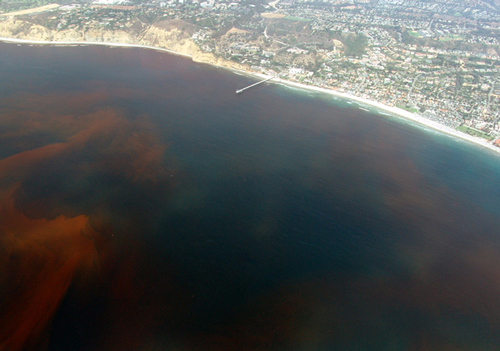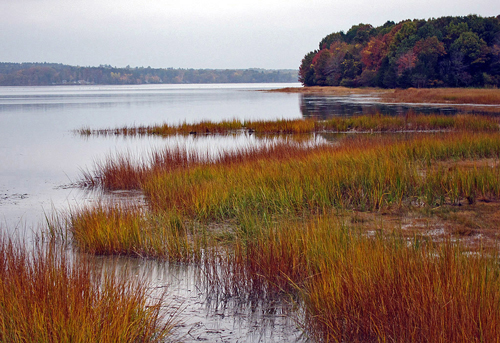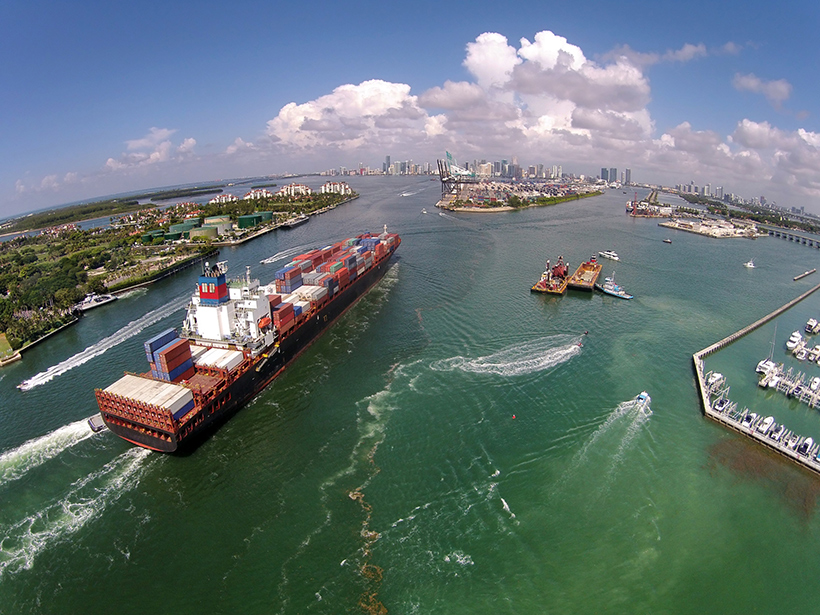For centuries, the sea has sustained lives and livelihoods, divulged ancient and unforeseen treasures, and stirred our dreams of remarkable new discoveries. But never in history have we had the immense opportunities now beckoning from the sea.
On the horizon is a new blue economy, an exciting oceanic frontier that offers great promise for making our nation safer, healthier, and more prosperous. The new blue economy is a knowledge-based economy, looking to the sea not for extraction of material goods but for data and information to address societal challenges and inspire their solutions.
The new blue economy puts science and predictive capabilities to work in a way that can fill critical, fast-rising needs across sectors.
A wide gulf often separates science from the people who need research results to protect and support them. However, the new blue economy puts science and predictive capabilities to work in a way that can fill critical, fast-rising needs across sectors. This economy is entrepreneurial and environmentally responsible, collaborative and competitive.
June is National Oceans Month; today is World Oceans Day. This focus provides an opportune time to reflect on the now realizable potential for investing in, and building, this new blue economy.
Charting a Course from Shore to Shore
The ocean of potential waiting to be tapped spans two metaphorical shores. On one is the enormous amount of scientific knowledge we continue to gather, drawn from observations and made available through web-based platforms that let us synthesize and visualize data from innumerable sources in real time.
Observations and predictions are the bedrock of ready, responsive, and resilient communities.
Through satellite and ocean-based systems, the National Oceanic and Atmospheric Administration (NOAA) and other agencies provide actionable data and other information about the sea to inform a range of predictions, from currents, waves, tides, and storm surges to water temperature, chemistry, and the marine biological system. These data and other observation-based “environmental intelligence”—timely, actionable and reliable information—provide foresight, enabling us to make wise choices, hedge risks, and reduce the costs of uncertainty.
For example, we can anticipate a hurricane’s track and intensity, evacuate vulnerable communities, anticipate resulting stresses to infrastructure, and make detailed plans should water, power, or other critical services fail. As the infrastructure for environmental intelligence, observations and predictions are the bedrock of ready, responsive, and resilient communities.

On the other shore are consumers calling for distinct tools and solutions for particular market needs. From farmers, emergency managers, and corporate executives to heads of households and heads of state, users increasingly demand spot-on information at their fingertips. They want to know whether their street, their business, or their favorite beach will be in harm’s way.
To get ahead of medical emergencies, for example, coastal communities and public health officials need an app to accurately forecast harmful algal blooms. Port-by-port fog and other forecasts could substantially cut shipping costs. Because, on average, U.S. floods, including those from ocean storm surges, kill more people each year than any other weather event, emergency managers must know precisely whom to evacuate and where the sandbags should go. Maps showing wide swaths of land and highways don’t zero in on such critical information.
The new blue economy offers ways to navigate between these shores, drawing on scientific and technological capabilities to create new solutions that will fill precise customer demands.
What Will the New Blue Economy Bring?
Envisioning value-added, tailored solutions opens a sea of opportunities. What difference would better seasonal sea ice predictions make to Arctic navigation? And open ocean predictions of swirling eddies to cruise lines? How about forecasts of low-pH water intrusions to shellfish hatcheries? Or real-time observations of deep ocean health to support oil spill recovery? Already, some creative entrepreneurs have developed highly valued tailored ocean temperature forecasts for the market of recreational tournament fishing.

We’ve learned that, depending on conditions, just 90 feet of salt marsh can stop 94% of wave energy. Yet, increasingly, coastal communities vulnerable to sea level rise are being hit with tough choices about what, where, and even whether to build. With most U.S. coastal land privately owned, most shoreline protection privately designed, and nearly 5 million people already living on land less than 4 feet above high-tide levels, “living shorelines” of natural infrastructure such as salt marshes offer a resilient option upon which entrepreneurs can capitalize.
Now, as never before, we have the know-how and technology to honor the sea’s fragile, finite resources while simultaneously spurring economic growth, new revenue streams, and jobs.
Making Fathoms of Data Publicly Available
Because sound science and reliable, timely data are foundational to the new blue economy’s success, NOAA is working to make more of this environmental intelligence available.
NOAA is partnering with Amazon, Google, IBM, Microsoft, and the Open Commons Consortium to bring great amounts of data to the cloud.
Each day, NOAA collects more than 20 terabytes of data—more than twice the data of the Library of Congress’s entire print collection. With demand accelerating quickly, NOAA is partnering with Amazon, Google, IBM, Microsoft, and the Open Commons Consortium to bring great amounts of data to the cloud.
NOAA is eager to get information out of its laboratories and into the hands of those just as eager to transform it into predictions, solutions, and customizable value-added services. A 2013 McKinsey & Company report shows that public data can generate more than $3 trillion a year in added value, catalyzing cost savings, new and improved products, and convenience.
The hope is that, in releasing data into the new blue economy, NOAA will not only spur more innovation and commerce but also encourage other agencies and groups to open up their data, contributing to an even more robust enterprise.
Setting Sail
The new blue economy can look to other sectors for guidance. There is much to learn from the commercial U.S. weather enterprise, estimated to be valued in billions and perhaps tens of billions of dollars. Weather and mapping tools are now used routinely to help untold numbers of people navigate their daily lives. But a half-century ago, the commercial weather industry was just a start-up, and many were skeptical about its business model.
The new blue economy will transform information into real profits, real jobs, and meaningful impact on lives and livelihoods across the United States.
Today the new blue economy holds similar promise. Enterprising private service providers will take a look at the coming sea change, recognize the opportunities, and roll up their sleeves. Markets imagined, and as yet unimagined, will open up. Publicly funded science, ever-expanding reams of public data, and an open toolbox of technological advances will be leveraged so that consumers reap personalized value from these considerable assets.
And, in bits and bytes, the knowledge-based new blue economy will transform information into real profits, real jobs, and meaningful impact on lives and livelihoods across the United States and the entire global community.
—Richard W. Spinrad, Chief Scientist, National Oceanic and Atmospheric Administration (NOAA), Washington, D.C..; email: [email protected]
Citation:
Spinrad, R. W. (2016), The new blue economy: A vast oceanic frontier, Eos, 97, https://doi.org/10.1029/2016EO053793. Published on 08 June 2016.
Text not subject to copyright.
Except where otherwise noted, images are subject to copyright. Any reuse without express permission from the copyright owner is prohibited.
Text not subject to copyright.
Except where otherwise noted, images are subject to copyright. Any reuse without express permission from the copyright owner is prohibited.

